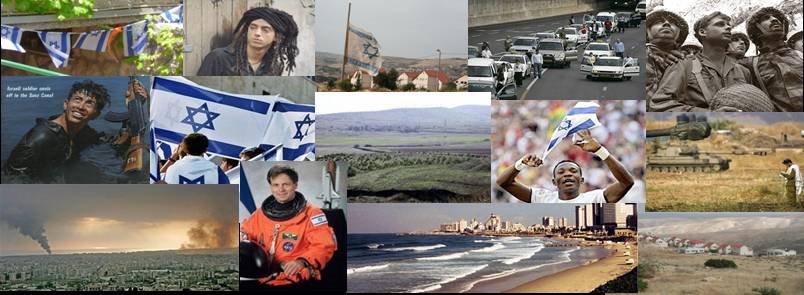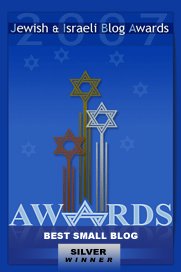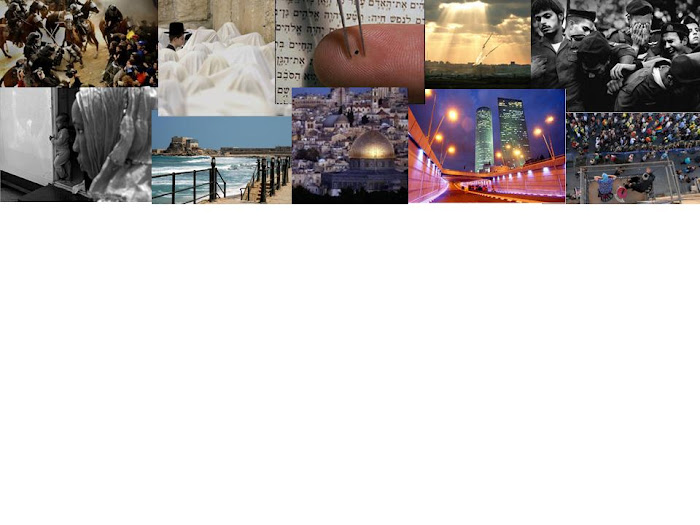Last Sunday evening, Israel marked Yom Hashoah, with a ceremony at Yad Vashem including poems, stories, songs and speeches. Yet outshining the Prime Minister, Acting President and Chief Rabbis was Holocaust survivor and former Shinui head Tommy Lapid, who questioned the mantra of 'never again' by chastising Iran, calling on the world to prevent genocide in Darfur and personally asking the PM to do more to help the thousands of survivors living in poverty in Israel. 
One abiding memory I have of Yom Hashoah is that of walking to the coastal road between Netanya and Tel Aviv and watching the scenes as dozens of cars stopped for the siren. Despite Israeli drivers being one of the more negative (and dangerous) parts of our society, it was amazing to see how they left their vehicles and sombrely stood with heads bowed to show their respect for those 6 million who were murdered just for being Jews.
That recognition is a far cry from when survivors first arrived after the war. Seen as representing weak Diaspora Jews who walked like sheep to the slaughter, they were insulted, ignored and even called 'soap'. Until the Eichman trial in the 1961, survivors were viewed as remnants of a bygone age when Jews were powerless and held up as proof of the Zionist axiom that only in Israel could Jews find a safe haven.
However, to our disgrace, the mistreatment of survivors continues today. While Germany provides Shoah victims with free rent, medicine and a generous monthly stipend, Israel presides over 80,000 survivors who live under the poverty line. What has become of our Zionist dream when those that endured the worst crime of the 20th century fill out their days starving and forgotten in a country supposed to care for them? What has the State come to when elderly survivors live better and more comfortably in Berlin than Jerusalem?
------------------------------------------------------------------------------------------------
Yom Hashoah is always sandwiched between two festivals – Pesach, the time of our Freedom from Slavery and Yom Ha’atzmaut, the time of our Freedom from Exile. On Pesach we celebrate what Jewish philosopher Isaiah Berlin termed negative liberty - the absence of obstacles, barriers or constraints. Yom Ha’atzmaut meanwhile reflects our capacity for positive liberty – a platform that gives us the ability to take control of our lives, the idea that after two millennia Jews finally re-entered history to take responsibility for their future.

Yom Hashoah should remind us what happens when we don’t have freedom to determine our own affairs. Yet 60 years on, it would seem that neither the world nor the State of Israel has kept its promise to the survivors. As Africans are slaughtered in Sudan, messianic leaders plot in Teheran and thousands of survivors go to bed hungry in dilapidated Israeli flats, we should collectively be ashamed when we mark one of mankind's darkest hours.
------------------------------------------------------------------------------------------------
The Haftarah for 7th day Pesach describes a valley filled with lifeless bones as seen by the prophet Ezekiel. God explains that these bones are the whole house of Israel " who cry out that ‘Our bones are dried up, and our hope is lost; we are indeed cut off." Yet hope is not lost, explains the Lord; "Behold, I will open your graves and raise you from your graves, O my people. And I will bring you into the land of Israel."
There can be no excuses for the treatment of survivors. Yet one can't but be inspired by the journey of the Jewish people over the last 60 years, how the valley of bones became a country of freedom, hope and pride. How survivors sang Hatikva at Bergen Belsen. How they left the valley of death to rebuild an ancient homeland, ingathering refugees from over 70 countries, creating a legal system rivaling Western Europe and providing the freest Arab press in the Middle East.
So as Israeli motorists temporarily leave behind their desire to break the ‘how many cars can I overtake in a minute’ record, let’s hope that we can harness the strength of those who lost everything yet had the fortitude to rebuild from scratch. And let’s hope we can utilize both the negative and positive freedoms that history has presented us with, so that the phrase ‘never again’ will no longer ring hollow in the ears of so many people who deserve better.






1 comment:
absolutely EXCELLENT reframing of isaiah berlin's positive vs. negative liberty, applied on yom hashoah vs. yom haatzmaut !!! really brilliant idea!!
that was really thought provoking!
as much as i am a fan of i. berlin, i've also felt something missing between positive and negative liberty, though these are very very helpful conceptual tools to understand the different types of liberty, the liberty human beings actually strive for is noth an "either/or" type, as usual.
and what your blog made me think about is that one of the struggles of the israeli society is actually struggling with (obviously not consciously) is to find this middle way between absolute negative and absolute positive liberty. and the more i think about it, the more i see how in this society, both types of liberty are extremely visible. negative liberty is very preponderant in the mentality, whereas the type of governance, and the type of expectations the people have from the government is highly positve liberty typed! and somehow i have the feeling that here in israel these two types are much less conflicting than in any other society.
as in "left wing/right wing" dont have the same connotation than in any other country.
Mireille
Post a Comment